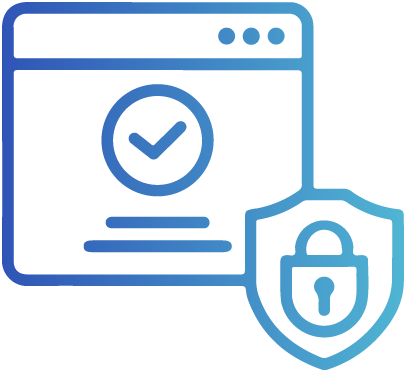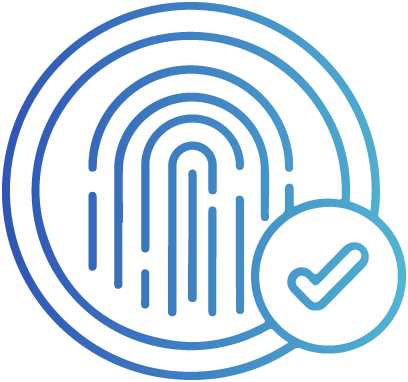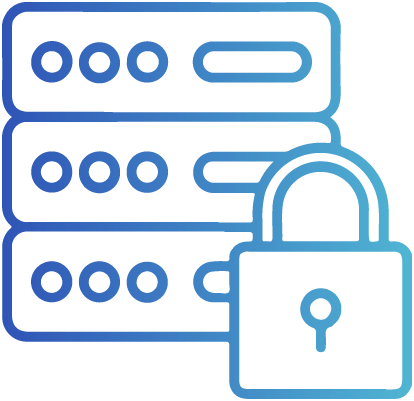Our Cybersecurity Solutions provide comprehensive, enterprise-grade protection across your entire IT infrastructure—covering endpoints, networks, cloud environments, and everything in between. We implement multilayered defense mechanisms, which covers Endpoint Security, Network Security, Threat Detection, Identity & Access Management, Data Protection, Application Security & User Awareness and Cloud Security. Whether it’s securing remote workforces, managing cloud security posture, or ensuring compliance with industry standards such as ISO 27001, NIST, or GDPR, our approach is tailored to your unique business needs. From strategic planning to hands-on implementation, we align cybersecurity initiatives with your organizational objectives—driving operational resilience, reducing cyber risk, and enabling secure digital transformation at scale.
The primary purpose of cybersecurity solutions is to safeguard an organization’s digital assets, including sensitive data, intellectual property, critical infrastructure, and communication systems. These solutions are designed to prevent unauthorized access, detect threats in real-time, and respond swiftly to minimize potential damage. By integrating cybersecurity into every layer of the IT environment, organizations can operate with confidence, ensure business continuity, and maintain stakeholder trust. Moreover, robust cybersecurity plays a critical role in protecting and enhancing brand reputation—demonstrating to customers, partners, and the public that the organization takes data protection seriously and operates responsibly in an increasingly digital world.
Organizations deal with vast amounts of sensitive data — from financial records to customer information. Cybersecurity measures ensure this data is protected from unauthorized access, theft, or leaks.
Cyber threats like malware, ransomware, phishing, and denial-of-service (DoS) attacks can severely disrupt operations. Cybersecurity solutions detect, block, and mitigate these attacks before they cause damage.
Industries such as healthcare, finance, and e-commerce are bound by data protection regulations (like GDPR, HIPAA, etc.). Proper cybersecurity ensures compliance, avoiding hefty fines and legal consequences.
A cyberattack can halt business operations, causing downtime and financial losses. With strong cybersecurity, organizations can prevent disruptions and maintain smooth and secure operations.
Customers expect their data to be handled securely. A breach can damage your reputation and erode trust. Implementing robust cybersecurity helps build confidence and enhances your brand image.
Data breaches and cyberattacks can be expensive — from recovery costs to legal fees and reputational damage. Investing in cybersecurity is more cost-effective than dealing with the aftermath of an attack.
Modern cybersecurity solutions offer 24/7 monitoring, enabling real-time threat detection and quick response to incidents, minimizing potential damage.
With the rise of remote and hybrid work, securing external connections, cloud systems, and personal devices is essential. Cybersecurity solutions ensure secure access and data integrity from anywhere.
Organizations often hold valuable intellectual property — designs, formulas, strategies, and more. Cybersecurity keeps this proprietary information safe from industrial espionage or sabotage.
A comprehensive cybersecurity strategy is part of a broader risk management framework. It helps identify vulnerabilities, assess potential threats, and proactively reduce overall organizational risk.

Endpoint security is a critical component of an organization’s cybersecurity strategy, focused on securing end-user devices such as desktops, laptops,...

A network security solution is a comprehensive framework of technologies, processes, and policies designed to protect an organization’s IT infrastructure...

A Threat Detection & Incident Response (TDIR) solution is a comprehensive security system that identifies, analyzes, and responds to potential...

An Identity & Access Management (IAM) solution is a set of policies, technologies, and processes that ensures the right individuals...

A Data Protection Solution is a comprehensive suite of technologies, policies, and procedures designed to ensure the confidentiality, integrity, and...

An Application Security & User Awareness Solution is a comprehensive approach to securing applications and educating users about security best...

A Cloud Security Solution is a set of technologies, policies, and best practices designed to protect cloud-based infrastructure, applications, and...
ChatGPT said: Cybersecurity Solutions are a set of tools, strategies, and services designed to protect an organization’s networks, systems, and data from cyber threats. These solutions include firewalls, encryption, antivirus software, threat detection systems, identity and access management, and incident response services, all aimed at preventing, detecting, and responding to cyberattacks.
The different layers of cybersecurity include: Perimeter Security – Protects the boundary of the network (e.g., firewalls). Network Security – Safeguards internal networks from unauthorized access. Endpoint Security – Secures individual devices like computers and smartphones. Application Security – Protects software applications from vulnerabilities. Data Security – Ensures the privacy and integrity of data. Identity & Access Management (IAM) – Controls who can access resources and systems. Incident Response – Responds to and mitigates security breaches. Disaster Recovery – Prepares for recovery after an attack or system failure.